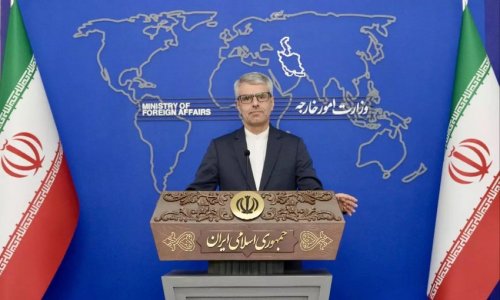Follow us !
Life after a nuclear war revealed
World
17:32 | 29.07.2014

Life after a nuclear war revealed
The terrible fate of Earth after a nuclear war has been mapped out using computer models for the first time.Worldwide famine, deadly frosts, global ozone losses of up to 50 per cent and more would greet any inhabitants of the planet still remaining after a nuclear conflict.And the researchers hope their study of what they call a relatively 'small' nuclear war will serve as a deterrent against such weapons being used by any nation in the future.The unnerving consequences were laid out in a paper called ‘Multidecadal global cooling and unprecedented ozone loss following a regional nuclear conflict.’The unnerving consequences were laid out in a paper called ‘Multidecadal global cooling and unprecedented ozone loss following a regional nuclear conflict.’The immediate result of 100 nuclear weapons roughly the size of those dropped on Hiroshima and Nagasaki being detonated would be the release of five megatons of black carbon into the atmosphere.Black carbon, not too dissimilar to soot, would block out the sun and can also be fatal to humans.Following a spell of black carbon rain, a deadly weather front that would devastate what remained of humanity following the nuclear war, the temperature of Earth would begin to drop.After a year the temperature would fall by 1°C (2°F), while after five it would be 1.5°C (3°F) cooler than it is now.About 20 years after the conflict it would warm again to just 0.5°C (1°F) below today’s temperature.Accompanying what the researchers call ‘the coldest average surface temperatures in the last 1,000 years’ would be a huge loss in ozone levels.They say that global ozone losses of 20 to 50 per cent would occur over populated areas, ‘levels unprecedented in human history’. The drop in temperature would produce ‘killing frosts’ that reduce the world’s growing season by 10 to 40 days.Meanwhile the eradication of up to half of the ozone would increase UV rays in some locations by as much as 80 per cent, raising the chance of developing skin cancer for large swathes of humanity.Combined with the global cooling, this ‘would put significant pressures on global food supplies and could trigger a global nuclear famine.’The planet’s falling temperature would also decrease the amount of rainfall.Five years after the conflict Earth would see 9 per cent less rain, while 26 years after the war there would still be 4.5 per cent less rain.The result of all this would be devastation and ultimately death for hundreds of millions, and perhaps billions.But the researchers hope that their example of a relatively small nuclear war between two modestly armed nuclear nations, India and Pakistan, will encourage superpowers such as the U.S. and Russia to discuss nuclear disarmament.‘Knowledge of the impacts of 100 small nuclear weapons should motivate the elimination of more than 17,000 nuclear weapons that exist today,’ they write.(dailymail.co.uk)Bakudaily.az










